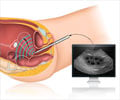MIT unveils a breakthrough wearable ultrasound patch, offering non-invasive monitoring of internal organs. A game-changer in healthcare technology.
- MIT researchers develop a wearable ultrasound patch for non-invasive imaging of internal organs, starting with the bladder
- The patch's flexibility allows for imaging various organs, potentially detecting diseases like ovarian cancer early
- Successful trials pave the way for a suite of devices, bridging the gap between clinicians and patients, with a focus on diverse organ imaging
A conformable phased-array ultrasound patch for bladder volume monitoring
Go to source). According to the researchers, this could make it easier for individuals with bladder or kidney diseases to determine whether these organs are functioning properly. This method might also be used to monitor different organs within the body by relocating the ultrasonic array and adjusting the frequency of the signal. Such gadgets may be able to detect tumors that originate deep within the body, such as ovarian cancer, early.
Lin Zhang, an MIT research scientist; Colin Marcus, an MIT graduate student in electrical engineering and computer science; and Dabin Lin, a professor at Xi'an Technological University, are the paper's lead authors.
Wearable Monitoring Devices that Take Ultrasound Images of Internal Organs
Dagdeviren's lab, which specializes in the development of flexible, wearable electronic devices, recently created an ultrasound monitor that can be put into a bra and used to screen for breast cancer. The scientists utilized a similar strategy in the latest work to construct a wearable patch that can attach to the skin and take ultrasound images of organs situated within the body.The researchers decided to focus on the bladder for their first demonstration, partially motivated by Dagdeviren's younger brother, who was diagnosed with kidney cancer a few years ago. He had difficulties completely emptying his bladder after having one of his kidneys surgically removed. Dagdeviren wondered if an ultrasound device that shows how full the bladder is could help patients like her brother or others with bladder or kidney problems.
“Millions of people are suffering from bladder dysfunction and related diseases, and not surprisingly, bladder volume monitoring is an effective way to assess your kidney health and wellness,” she says.
Currently, the only technique to estimate bladder volume is to visit a medical facility and use a standard, cumbersome ultrasonography probe. Dagdeviren and her colleagues aimed to create a wearable option for patients to use at home.
The patch's polymer is naturally adhesive and attaches gently to the skin, making it simple to attach and detach. When applied to the skin, underwear or leggings might assist in keeping it in place.
Novel Patch that Can Help Determine Bladder Capacity Using Ultrasound Technology
The researchers demonstrated that the new patch could capture images comparable to those taken with a traditional ultrasound probe in a study conducted with collaborators from the Center for Ultrasound Research and Translation and the Department of Radiology at Massachusetts General Hospital and that these images could be used to track changes in bladder volume.Because the field of vision is big enough to encompass the entire bladder, no ultrasound gel or pressure is required while using this patch, as with a standard ultrasound probe.
The researchers connected their ultrasound arrays to the same type of ultrasound machine used in medical imaging centers to view the images. The MIT team is now developing a portable device the size of a smartphone that might be used to see the photographs.
“In this work, we have further developed a path toward clinical translation of conformable ultrasonic biosensors that yield valuable information about vital physiologic parameters. Our group hopes to build on this and develop a suite of devices that will ultimately bridge the information gap between clinicians and patients,” says Anthony E. Samir, director of the MGH Center for Ultrasound Research and Translation and Associate Chair of Imaging Sciences at MGH Radiology, who is also an author of the study.
The MIT team also intends to create ultrasound devices that can image other organs in the body, such as the pancreas, liver, or ovaries. The frequency of the ultrasound signal must be adjusted based on the location and depth of each organ, which necessitates the development of new piezoelectric materials. For some of these deep-seated organs, the device may be more effective as an implant rather than a patch.
“For whatever organ that we need to visualize, we go back to the first step, select the right materials, come up with the right device design and then fabricate everything accordingly,” before testing the device and performing clinical trials, Dagdeviren says. “This work could develop into a central area of focus in ultrasound research, motivate a new approach to future medical device designs, and lay the groundwork for many more fruitful collaborations between materials scientists, electrical engineers, and biomedical researchers,” says Anantha Chandrakasan, dean of MIT’s School of Engineering, the Vannevar Bush Professor of Electrical Engineering and Computer Science, and an author of the paper.
Reference:
- A conformable phased-array ultrasound patch for bladder volume monitoring - (https://www.nature.com/articles/s41928-023-01068-x)
Source-Medindia
















